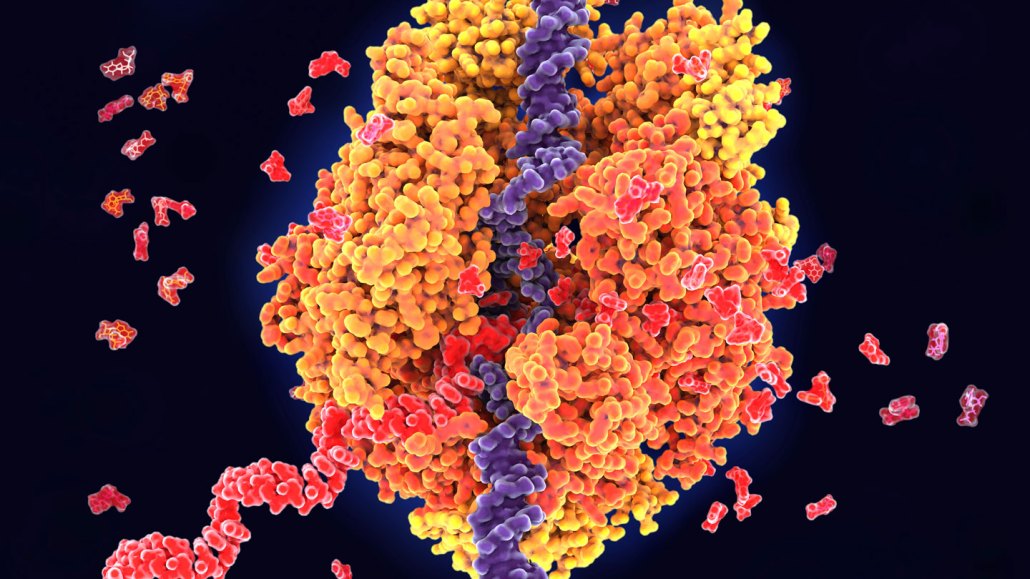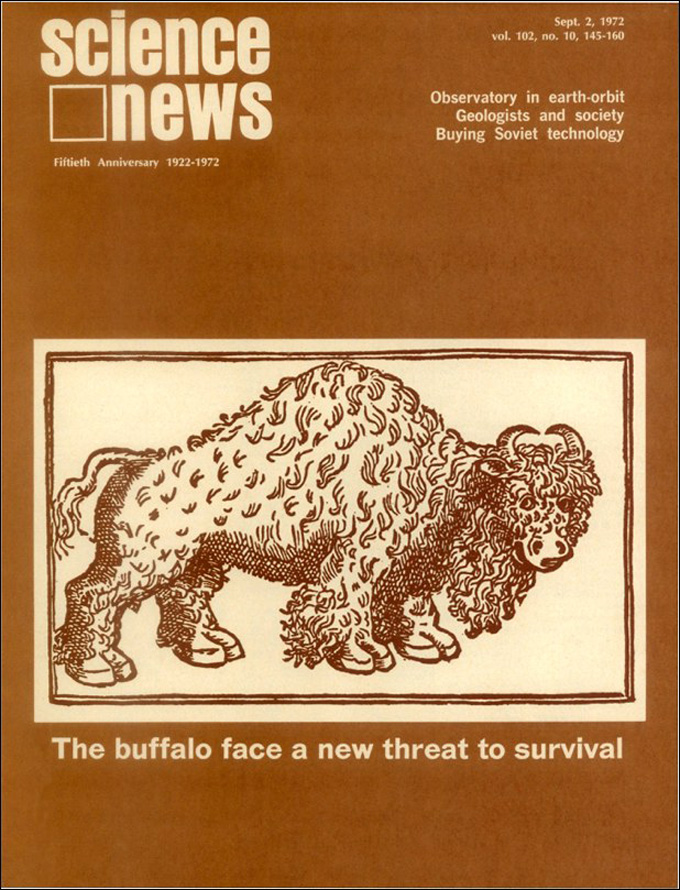50 years ago, genes eluded electron microscopes
Excerpt from the September 2, 1972 issue of Science News

Scientists still can't directly see genes with electron microscopes, but combining the tool with the molecular scissors CRISPR/Cas9 has let researchers visualize genes being transcribed (illustrated) from DNA (blue) into RNA (red).
Juan Gaertner/Science Photo Library/Getty Images Plus






